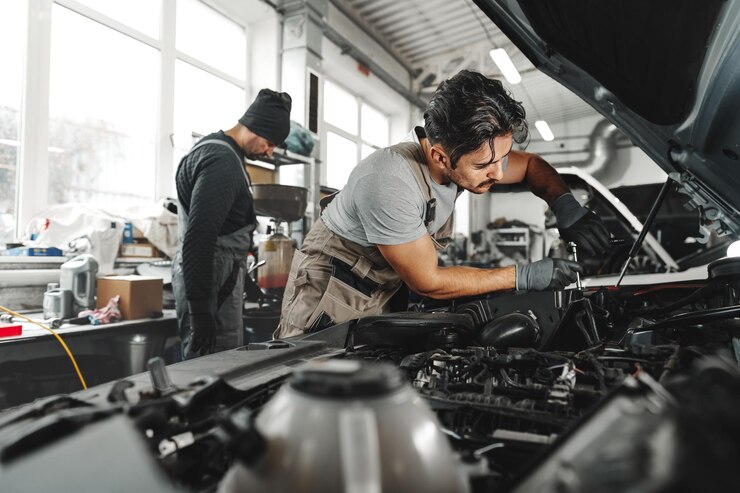
Car engines are marvels of engineering that power our daily transportation needs. Whether you are driving to work, taking a road trip, or simply running errands, understanding how car engines work can help you appreciate the incredible technology under your vehicle hood. In this comprehensive guide, we will delve into the inner workings of car engines, demystifying the complex processes that turn fuel into motion.
At its core, a car engine is an internal combustion engine. Internal combustion refers to the process of burning fuel within the engine to create power. In most vehicles, gasoline or diesel fuel is used as the primary source of energy.
At its core, a car engine is an internal combustion engine. Internal combustion refers to the process of burning fuel within the engine to create power. In most vehicles, gasoline or diesel fuel is used as the primary source of energy.
Car engines typically operate on a four-stroke cycle, consisting of four phases:
Car engines operate on a continuous cycle of these four strokes: intake, compression, Power, and exhaust. This cycle happens rapidly, with each cylinder in the engine firing in sequence. The number of cylinders in an engine varies depending on the vehicle make and model, with four, six, and eight-cylinder engines being common.
Pistons are a vital component of the engine operation. These cylindrical pieces of metal move up and down within the engine cylinders, creating the changes in volume required for the four-stroke cycle. The force generated by the combustion of the air-fuel mixture pushes the piston down, providing power to turn the crankshaft.
The crankshaft is the central rotating component of the engine. It converts the linear motion of the pistons into rotational motion, which ultimately drives the wheels of the car. The power generated by the combustion process is transferred to the crankshaft through connecting rods.
Valves are crucial for controlling the flow of air and fuel into and out of the engine cylinders. Each cylinder typically has two valves: an intake valve and an exhaust valve.
The timing of these valve opening and closing is meticulously controlled by the engine camshaft, which is connected to the crankshaft via a timing belt or chain. The precise timing ensures that the intake valve opens to admit the air-fuel mixture and the exhaust valve opens to release the burnt gases at the right moments in the four-stroke cycle.
Modern car engines use either spark ignition (SI) or compression ignition (CI). SI engines rely on spark plugs to ignite the air-fuel mixture, while CI engines use high compression to ignite the fuel without spark plugs. Fuel injection systems have largely replaced carburetors, delivering precise amounts of fuel to each cylinder, optimizing efficiency and emissions.
Engine parts move at high speeds and generate friction, which can cause damage without proper lubrication. Engine oil is essential for reducing friction and heat, ensuring smooth operation. Regular oil changes are crucial to maintaining engine health.
Engines can become extremely hot during operation, so they require a cooling system to prevent overheating. Radiators, coolant, and a water pump work together to regulate the engine temperature.
Car manufacturers continually strive to improve engine efficiency and power output. This is achieved through various technologies and engineering advancements:
Turbocharging and Supercharging: These systems force more air into the engine, allowing it to burn more fuel and produce more power.
Variable Valve Timing (VVT): VVT systems adjust the timing of the intake and exhaust valves to optimize performance at different engine speeds.
Direct Injection: Direct fuel injection delivers fuel directly into the combustion chamber, improving combustion efficiency.
Hybrid and Electric Power trains: Hybrid and electric vehicles use a combination of internal combustion engines and electric motors for improved efficiency and reduced emissions.
The exhaust system includes a series of pipes and components designed to carry the exhaust gases away from the engine and reduce harmful emissions. Catalytic converters help convert pollutants into less harmful substances.
Conclusion:
Understanding how car engines work is not only fascinating but also empowers you as a vehicle owner. Regular maintenance, proper care, and knowledge of your engine operation can extend its lifespan and improve fuel efficiency. So, the next time you start your car, you will have a deeper appreciation for the intricate processes happening under the hood, propelling you forward on your journey.
Understanding how car engines work provides insight into the impressive blend of mechanical and electronic technologies that power our vehicles.
car engines are the heart of modern transportation. As technology continues to advance, we can expect even greater efficiency, power, and sustainability in the engines.